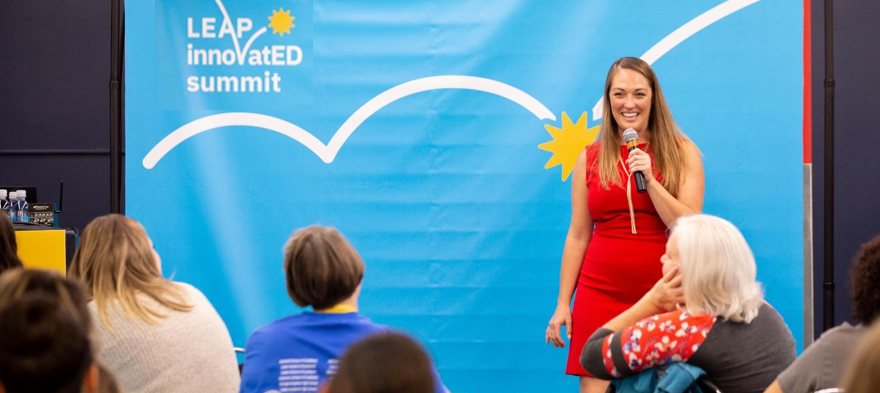
Sep 3, 2019 12:00:00 AM
Fall has always been my favorite season. Having the opportunity to join hundreds of educators at the recent LEAP InnovatED Summit, just days before most students return to school, reminded me of exactly why. The fall holds hope and potential for the school year to come and the new relationships that will be built.
Teachers flooded into the conference room for my presentation, eager to enhance their own purpose statements about why they work in education, as well as to share their hopes for the upcoming school year. As teachers prepare for the journey ahead, students will arrive in their classrooms with backpacks full of their own life experiences—positive, negative and sometimes traumatic.
At Turnaround for Children, we work to ensure that educators realize the power they carry to be brain builders in children’s lives by showing them how context—the relationships, environments and experiences in a child’s life—shapes development. Supportive, buffering relationships with adults can prevent and even reverse the effects of traumatic experiences on learning.
We know that each child has limitless potential. By creating a safe and supportive environment, and by being attuned and responsive to each student’s individual, holistic needs, [pullquote]educators can play a critical role in students’ healthy development and learning.[/pullquote]
They can either reinforce a student’s past experiences with school, whether negative or positive, or they can unlock a new way of being and interacting with caring adults. It is an enormous responsibility, but intentional strategies and interactions can pave the way for meaningful teacher-student relationships.
Here are two quick and easy strategies educators can embrace to lay the foundation for truly transformational adult-student relationships. The first can be used with all students. The second is a strategy to be used with a student who might need additional support.
Journaling or Conversation Notebooks
Teachers use journaling in the classroom in a variety of ways that can support relationship building. Here are some ideas to spark your thinking:
The Secret Code
Remember that no matter a student’s start in life or the obstacles they may have faced, science tells us we can design schools and classrooms—starting with each educator—that nurture the development of the whole child. By doing this, we can unleash the potential in every child.
Amy Nicholson is Director of Integrated Program Strategy at Turnaround for Children, a nonprofit organization that translates the science of learning and development into tools, practices and systems for educators to help all students thrive, particularly children who have been impacted by adversity.
Few issues in education spark more tension and debate than standardized testing. Are they a tool for equity or a burden on students? A necessary check on school systems or a flawed measure of...
Charter schools are public schools with a purpose. Operating independently from traditional school districts, they're tuition-free, open to all students, and publicly funded—but with more flexibility...
Despite the benefits of a diverse teaching force, prospective teachers of color fall out of our leaky preparation pipeline at every stage: preparation, hiring, induction, and retention. Here’s what...
Ed Post is the flagship website platform of brightbeam, a 501(c3) network of education activists and influencers demanding a better education and a brighter future for every child.
© 2020-2025 brightbeam. All rights reserved.
Leave a Comment